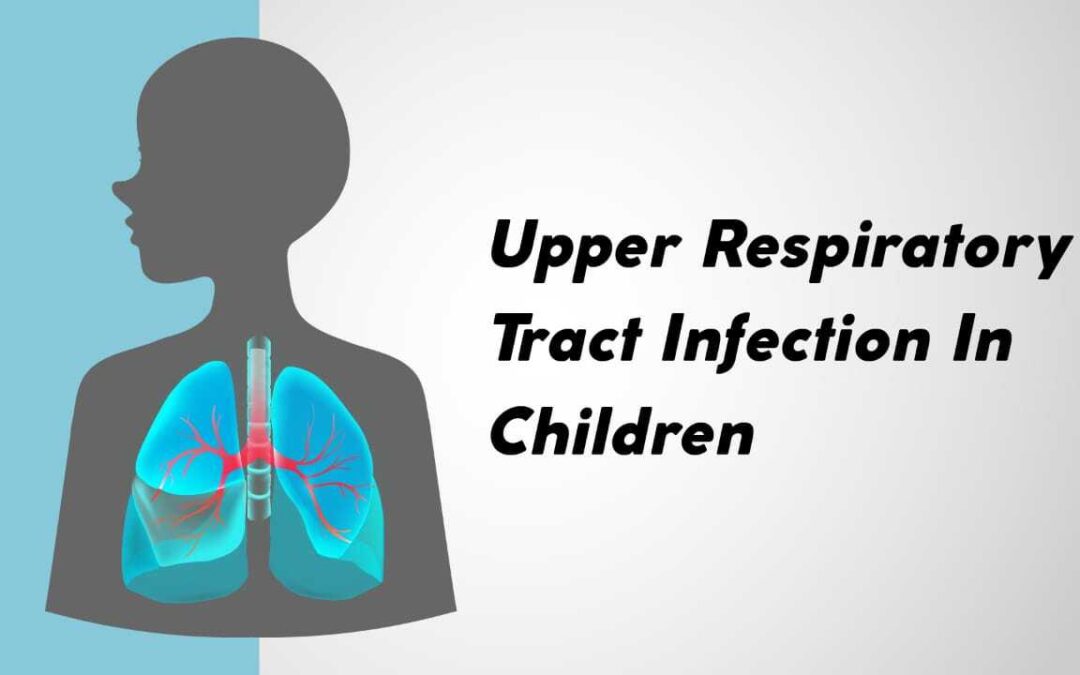UPPER TRACT RESPIRATORY INFECTION IN CHILDREN
Infections are caused when there is an invasion of microorganisms, simply known as foreign bodies that cannot be seen with the naked eye in the body. Infection generally manifests when there is an invasion of an infectious agent such as a virus, bacteria, fungi, etc, and their multiplication in the body that they have invaded. This in turn leads to physical symptoms that are manifested by the infected individual. Some infections in children can be more rampant at various ages while some other infections may differ from child to child based on other factors like genetics. For example, what poses a threat to older children may include non-communicable diseases, injuries, and conflicts. However, children under the age of 5 years are especially vulnerable to infectious diseases like malaria, pneumonia, diarrhea, HIV, and even tuberculosis. Some of these infections may fall under categories such as respiratory infection, urinary tract infection, wound infection, airborne infection, and so on.
Respiratory Infection in Children
A respiratory tract infection is any infection that affects the respiratory system, that is, the part of the body that is responsible for breathing. The majority of the infections that affect the respiratory system attack some particular areas which may include the sinuses, throat, Lungs, or airways. There are two types of respiratory tract infections;
- Upper Respiratory Tract Infection
- Lower Respiratory Tract Infection
Upper Respiratory Tract Infection in Children
An upper respiratory infection affects the upper part of a child’s respiratory system, including the sinuses and throat. Some of the symptoms associated with upper respiratory tract infection in children may include;
- Nose
- Sore throat
- Cough
- Nasal Congestion
- Scratchy throat
- Headache in children above 5 years.
Due to the symptoms that follow an infection from the respiratory tract, diagnosis is not hard but must be confirmed by a medic as some of the symptoms might just be a symptom affiliated with any other kinds of infections.
Causes of Upper Respiratory Tract Infections in Children.
Upper respiratory tract infections can be caused by either viruses or bacteria. However, the infections of the respiratory tract are mostly viral. In children, rhinoviruses, influenza viruses (during annual winter epidemics), parainfluenza viruses, respiratory syncytial virus (RSV), enteroviruses, coronaviruses, and certain strains of adenovirus are the main causes of viral respiratory infections.
Bacterial causes also include, Streptococcus pneumoniae, Haemophilus influenzae, Moraxella catarrhalis, Staphylococcus aureus
Since these viruses and bacterial cannot be seen with the naked eye, infections are caused by some of these:
- By Contact: One of the ways respiratory tract infection can be passed generally between children is when the children’s hands come in contact with nasal secretions from an infected person.
- By Touch: When a child comes in contact with the nasal secretion of an infected person, the disease-causing microbe gains entrance into the body when the child touches his/her nose with the hand
- Less often, infections spread when children breathe air containing droplets that were coughed or sneezed out by an infected person.
For various reasons, nasal or respiratory secretions from children with viral respiratory tract infections contain more viruses than those from infected adults. This increased output of viruses, along with typically lesser attention to hygiene, makes children more likely to spread their infection to others. The possibility of transmission is further enhanced when many children are gathered together, such as in childcare centers and schools. Contrary to what people may think, other factors, such as becoming chilled, wet, or tired, do not cause colds or increase a child’s susceptibility to infection.
Management of URTI
A common cold may last up to 14 days, with symptoms averaging 7-11 days in duration.
Fever, sneezing, and sore throat typically resolve early, whereas cough and nasal discharge are among the symptoms that last longest.
Treatment is usually conservative with fewer cases needing medications.
Conservative treatment include:
The following home-care measures may help to provide relief of nasal and sinus symptoms:
- Steaming.
- Turn on hot shower water, close the bathroom door, sit down, and inhale the steam
- Take long, hot showers
- One way to provide moist, warm air is to pour boiled water into a shallow pan or bowl placed in a stable location (eg, middle of a kitchen counter) and have the mother and chuld drape a cloth over his/her head and lean over the bowl to inhale the steam. Exercise caution to avoid spilling boiling water, which may cause scalding injuries.
- Sipping hot water or warm drinks may be more soothing to the nasal passages than ice cold drinks. Avoid extremely cool and dry air.
- For infants, a bulb syringe can be used to gently suction the nostrils before feeding to ease nasal breathing. Parents should clean the bulb after each use with hot soapy water followed by a rinse. Drain the bulb and allow it to dry before reuse.
- Avoidance of nasal irritants (eg, cigarette smoke, indoor and outdoor air pollutants).
Medications may include use of Analgesics, Vitamin C and few antihistamines.
Completely avoid the use of Cough syrup in children less than 5 years of age.
Sparsely, Antibiotics and Antivirals medications may be needed. If symptoms persist beyond 14 days, consult the pediatrician for other possible causes and management of respiratory tract infection.
Reference
https://my.clevelandclinic.org/health/articles/4022-upper-respiratory-infection
https://www.msdmanuals.com/home/children-s-health-issues/common-viral-infections-in-infants-and-children/overview-of-viral-respiratory-tract-infections-in-children

